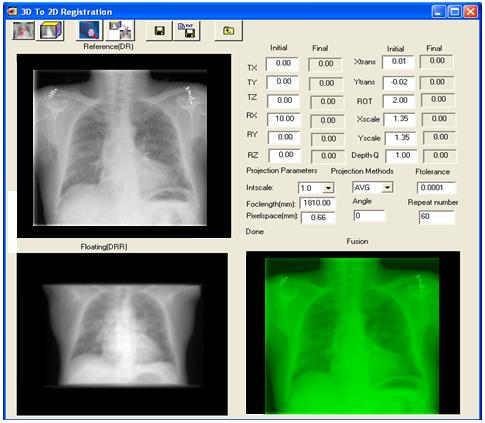Image Registration
• Thin-plate spline (TPS) deformable image registration
• B-spline deformable image registration
• Finite element model-based deformable registration
• Two-dimensional (2D) image registration software
• Three-dimensinal (3D) image registration software
• 3D to 2D Registration
This project implements a three-dimensional (3D) to two-dimensional (2D) registration for computed tomography (CT) and dual-energy digital radiography (DR) for the detection of coronary artery calcification. In order to utilize CT as the “gold standard” to evaluate the ability of DR images to detect and localize calcium, we developed an automatic intensity-based 3D-to-2D registration method for 3D CT volumes and 2D DR images. To generate digital rendering radiographs (DRR) from the CT volumes, we developed three projection methods, including Gaussian-weighted projection, threshold-based projection, and average-based projection, were developed. Cross correlation (NCC) and normalized mutual information (NMI) are used as the similarity measurement.
The software program has the following capabilities: (1) Simulate DR images from the reference CT volume at any angle and generate the projection image using Gaussian-weighted projection, threshold-based projection, and average-based projection methods; and (2) Perform registration between the original DR images and the DRR image reconstructed from the CT volume.

Figure 6. Graphic user interface (GUI) for the 3D to 2D registration software.
• Slice to Volume RegistrationImage Classification
Image Segmentation
Attenuation Correction
Partial Volume Correction
Motion Correction
